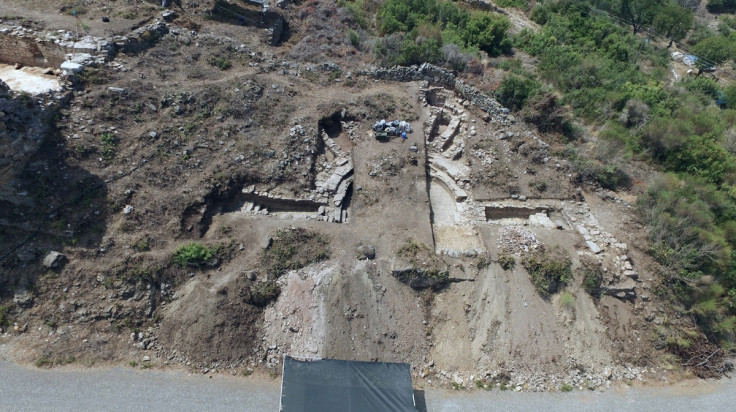Medusa uncovered: Marble head of mythical being discovered guarding temple in ancient Roman city
US archaeologists excavating an ancient Roman city in southern Turkey have unearthed a marble head of mythical Greek Gorgon Medusa. The head was found in Antiochia ad Cragum, a city that is thought to have been established in the first century when Emperor Nero was at the helm of the Roman Empire.
The archaeologists from the University of Nebraska-Lincoln (UNL) say that the head of Medusa – who in Greek mythology had the power to turn people into stone if they gazed upon her – was found near to a 1,600 square foot marble mosaic and was used to guard a small temple. It remains unclear how the head survived an attack from early Christians on artefacts of Pagan art.
Michael Hoff, a University of Nebraska-Lincoln art historian and director of the excavations, said: "Unfortunately, Isis followers were not the first ones to destroy classical buildings in the name of religion. It was the Christians who performed the first destruction of buildings, back in the late Roman and Byzantine periods. They wanted to remove pagan images because they were considered to be idolatrous. The Christians were extremely active at this site and they did a great deal of destruction."

The discovery of the head, along with the mosaic, gives insights into how the people at the time lived, according to UNL. However, what that the team has been unable to answer thus far is why it was so hastily abandoned and why the ancient city, along with the bouleutarion or senate house, was buried by six feet of earth.
Hoff said: "Something happened. It's possible that earthquakes damaged the city to a degree that people just decided to abandon it. Or it's possible we can find archaeological evidence that people lived here until the arrival of the Seljuk Turks in about 1100."
© Copyright IBTimes 2025. All rights reserved.






















